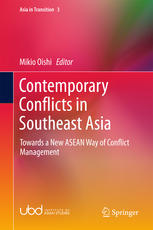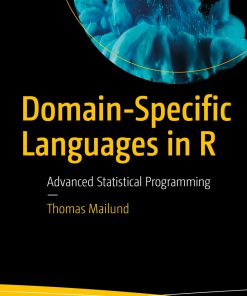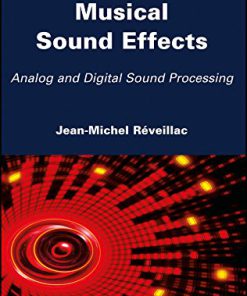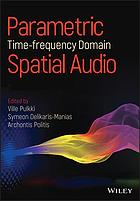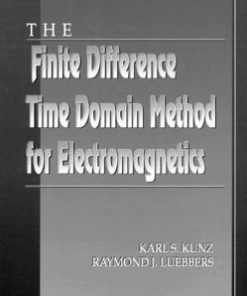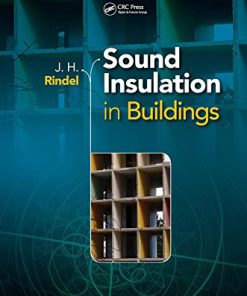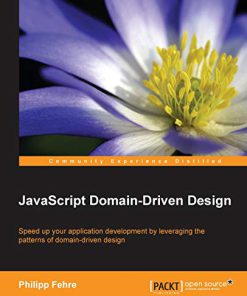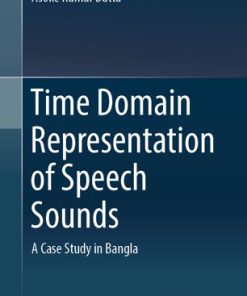Sound in the Time Domain 1st Edition by Mikio Tohyama ISBN 9789811058899 981105889X
$50.00 Original price was: $50.00.$25.00Current price is: $25.00.
Sound in the Time Domain 1st Edition by Mikio Tohyama – Ebook PDF Instant Download/Delivery: 9789811058899 ,981105889X
Full download Sound in the Time Domain 1st Edition after payment
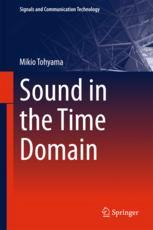
Product details:
ISBN 10: 981105889X
ISBN 13: 9789811058899
Author: Mikio Tohyama
Sound in the Time Domain 1st Edition Table of contents:
1 Signal Dynamics as Superpositions of Sinusoidal Waves in the Time Domain
1.1 Sinusoidal Waves
1.1.1 Representation of Sinusoidal Waves
1.1.2 Complex Exponential Function
1.1.3 Complex Variables and Logarithmic Functions
1.2 Temporal Fluctuations of Sinusoidal Waves in the Time Domain
1.2.1 Analytic Signals and Envelopes
1.2.2 Beats
1.2.3 Modulation
1.2.4 Phase and Group Speed
1.2.5 Period and Fundamental Frequency
1.2.6 Missing Fundamental
1.2.7 Harmonic, Nonharmonic, and Almost Periodic Functions
1.3 Spectral Modification by the Superposition of Sinusoidal Waves with Different Phases
1.3.1 Interference of Sinusoidal Waves
1.3.2 Superposition with Different Phases in the Time Domain
1.3.3 Cross-Correlation of Sinusoidal Waves
1.3.4 Correlation Functions
1.4 Exercises
References
2 Sinusoidal Waves as Random Variables
2.1 Random Variables
2.1.1 Probability Distribution and Expectation
2.1.2 Sum of Independent Random Variables and Convolution
2.2 Correlations
2.2.1 Correlation Functions for Random Variables
2.2.2 Correlation and Square Correlation
2.3 Probability Distribution for Sinusoidal Waves
2.3.1 Probability Density Function
2.3.2 Probability Density Function for Sinusoidal Wave
2.3.3 Uncorrelation and Independence of Random Variables
2.3.4 Binaural Merit in Listening to Pairs of Signals
2.4 Exercises
References
3 Fourier Transform and Superposition of Sinusoidal Functions
3.1 Convolution, Generating Functions, and Fourier Transform
3.1.1 Generating Function and Combination
3.1.2 Fourier Transform and Convolution
3.1.3 Periodicity of the Fourier Transform
3.1.4 Inverse Fourier Transform
3.1.5 Auto-Correlation and Auto-Convolution for Signal Dynamics in Time Domain
3.1.6 Decomposition of Sequence into Even and Odd Sequences
3.1.7 Analytic Sequence and Envelope
3.2 Symbolic Expression of Time Delay and Convolution
3.2.1 Magnitude Spectral Modification by Superposition of Direct and Delayed Sound
3.2.2 Effect of Phase on the Direct Sound from the Time Delay
3.2.3 Clustered Time Sequence and Its Spectral Effect
3.2.4 Sinc Function and Auto-Correlation
3.3 Fourier Transform of Functions
3.3.1 Fourier Transform
3.3.2 Sinc Function
3.3.3 Spectral Weighting and Auto-Correlation Function
3.3.4 Windowing in the Time Domain
3.4 Triangular Windowing and Group Delay
3.4.1 Phase and Group Delay Functions
3.4.2 Group Delay Function for N-Sample Delay of Reflection
3.4.3 Group Delay Functions and Locations of Zeros
3.5 Fourier Series Expansion of a Periodic Function
3.5.1 Fourier Series
3.5.2 Auto-Convolution and Auto-Correlation of Spectral Sequence
3.5.3 Dirichlet Function
3.6 Exercises
References
4 Differential Equations for Sinusoidal Waves
4.1 Differential Equations and Linear Systems
4.1.1 Single-Degree-of-Freedom System
4.1.2 Sinusoidal Function and General Solution of Single-Degree-of-Freedom System
4.1.3 Impulse Response
4.1.4 Response to an External Force
4.1.5 Transient and Resonant Responses to a Sinusoidal Function
4.2 Source Waveform Estimation Through Differential Equation
4.2.1 Observed Response from a Single-Degree-of-Freedom System
4.2.2 Source Waveform Recovery for a Single-Degree-of-Freedom System
4.3 Wave Equations for Sinusoidal Traveling Waves
4.3.1 Equation of Waves
4.3.2 Propagation of Sinusoidal Waves
4.4 Exercises
References
5 Discrete Signals and Linear Systems
5.1 Linear Equations
5.1.1 Linear Combination of Vectors
5.1.2 Linear Equation and Linear Combination
5.1.3 Minimum-Norm Solution
5.1.4 Minimum-Norm Solution by Least-Squares Error Criterion
5.2 Linear Regression
5.2.1 Least-Squares Error Solution
5.2.2 Example of Linear Regression Analysis
5.3 Orthogonal Regression Analysis
5.3.1 Orthogonal Decomposition and Regression
5.3.2 Quadratic Form
5.3.3 Representation of a Matrix by Its Diagonal Matrix of Eigenvalues
5.3.4 Quadratic Form and Orthogonal Eigenvectors
5.3.5 Binaural Merit and Principal Component Analysis
5.3.6 Source Separation by Decorrelation of Pair of Signals
5.3.7 Decorrelation of Signals and Estimation of Impulse Response
5.4 Discrete Fourier Transform and Spectral Representation of Sequences
5.4.1 Fourier and Discrete Fourier Transforms of a Sequence
5.4.2 Examples of Spectral Sequences by Discrete Fourier Transform
5.4.3 Violation of Sampling Condition
5.5 Exercises
References
6 Transfer Functions and Sequences in the Time Domain
6.1 z-Transforms
6.1.1 Traveling Waves and the Pure Delay System
6.1.2 Discrete System and z-Transform
6.2 Phase Response and Symmetric Zeros
6.2.1 Accumulation Phase and Group Delay
6.2.2 Linear Phase and Pair of Symmetric Zeros with Respect to the Unit Circle
6.2.3 Power Spectral Functions for Pair of Symmetric Zeros
6.3 Poles for Resonance Systems and Transient Time Responses
6.3.1 Cumulative Spectral Analysis of the Transient Response for a Resonance System
6.4 Unstable Pole for Causal System
6.4.1 Poles and Howling
6.4.2 Detection of Unstable Time Responses
6.5 Poles and Filtering
6.5.1 Notch Filtering
6.5.2 Inverse and All-Pass Filtering for Predicted Pole
6.5.3 Inverse Filter for the Minimum Phase System
6.6 Exercises
References
7 Signal Dynamics for Time and Frequency Domains
7.1 Enhancement of Signal Dynamics for Noisy Waveforms
7.1.1 Superposition of Noisy Signals
7.1.2 Multiplication of Noisy Signals
7.2 Estimation of Path Information
7.3 Spectral Peak Selection and Representation of Time Waveforms
7.3.1 Estimation of Spectral Sequence of Sinusoidal Function
7.3.2 Spectral Peak Estimation for Single Sinusoidal Sequence
7.3.3 Time-Variant Spectral Peaks in Time Waveforms
7.3.4 Fundamental Frequency Tracking of Time Waveform
7.4 Modal Overlap and Representation of Envelopes
7.4.1 Separation of Auto-correlation Functions
7.4.2 Estimating Envelopes of Sound in the Time Domain
7.4.3 Examples of Signal Decomposition into Clustered Sinusoids
7.4.4 Separation of Direct Wave
7.5 Exercises
References
8 Time and Frequency Responses of Spherical Source
8.1 Impulse Responses of a Point Source
8.1.1 Pressure Response of a Point Source
8.1.2 Steady-State Response of a Point Source
8.1.3 Acoustic Transfer Impedance and Impulse Response of a Point Source
8.2 Transient Response of a Spherical Source
8.2.1 Steady-State Response
8.2.2 Acoustic Transfer Impedance of Spherical Source
8.3 Acoustic Radiation Impedance and Pressure Response in the Time Domain
8.3.1 Acoustic Radiation Impedance
8.3.2 Radiation Impedance in the Time Domain
8.3.3 Pressure Response in Time Domain
8.4 Exercises
References
9 Wave Equation and Its General Solution in the Time Domain
9.1 Initial Disturbance and One-Dimensional Waves
9.1.1 Initial Condition and Impulse Response
9.1.2 Response to Initial Disturbance of One-Dimensional Wave Equation
9.2 Wave Propagation of a Spherically Symmetric Wave
9.2.1 Wave Equation for a Spherically Symmetric Wave
9.2.2 General Solution for the Spherically Symmetric Wave
9.2.3 Free Oscillation of a Spherically Symmetric Wave
9.2.4 Propagation of the Initial Disturbance
9.3 General Solution of the Wave Equation
9.3.1 Initial Condition and Wave Propagation in Three-Dimensional Space
9.4 Exercises
References
10 Sound Traveling in One-Dimensional Space
10.1 Time-Domain Approach to Pulse-Like Sound Traveling in Acoustic Tube
10.1.1 Sound Traveling in a Tube with Open Ends
10.1.2 Sound in an Open–Closed Tube
10.1.3 Period and Fundamental Frequency
10.1.4 Magnitude Frequency Characteristics of Pulse Train
10.2 Boundary and Driving Conditions of Sound Traveling in a Tube
10.2.1 Sinusoidal Waves Under Generalized Boundary Conditions
10.2.2 Generalized Boundary Conditions in Time-Delayed Reflection
10.2.3 Driving Condition for the Acoustic Tube
10.3 Phase Trend of a Periodic Wave Along a Finite Length of String
10.3.1 Periodically Repeated Waves Traveling Between both Ends
10.3.2 Poles and Zeros of a Cyclic Wave on a Finite String
10.4 Minimum-Phase Property and Propagation Phase
10.4.1 Poles and Zeros for Minimum Phase
10.4.2 Accumulated Phase for One-Dimensional Systems
10.5 Sound Radiation from a One-Dimensionally Extended Source
10.5.1 Representation of Waves and Radiation Impedance
10.5.2 Geometric Interpretation of Radiation Impedance
10.5.3 Coincidence Frequency and Radiation Condition
10.5.4 Superposition of Vibration
10.5.5 Sound Radiation from an Impulsive Vibration
10.6 Exercises
References
11 Reverberation in Rooms
11.1 Spatial Dynamics for Superposition of Sinusoidal Waves with Random Phase
11.1.1 Statistical Approach to Sound Field in an Enclosed Space
11.1.2 Superposition of Random Sinusoidal Waves
11.1.3 Distribution of Envelopes
11.2 Transmission of Envelopes and Reverberation
11.2.1 Reverberation Response to Wideband Noise Source
11.2.2 Reverberation Response to Modulated Wideband Noise Source
11.2.3 Transmission of Modulated Sinusoidal Signal
11.3 Stochastic Reverberation Process and Reverberation
11.3.1 Ensemble Average of Reverberation Energy
11.3.2 Binomial Distribution for the Collision Process
11.3.3 Multi-nominal Distribution in the Collision Process
11.3.4 Poisson Distribution as a Limiting Case
11.4 Energy Balance Equation and Poisson Process
11.4.1 Energy Balance Equation
11.4.2 Differential Equation for Reverberation Formula
11.5 Reverberation and the Geometric Dimension of the Space
11.5.1 Mirror Image in Three-Dimensional Space
11.5.2 Mirror-Image Sources in a Two-Dimensional Space
11.5.3 Mirror Image in One-Dimensional Space
11.6 Exercises
References
12 Signal Dynamics and Sound Source Distance
12.1 Direct Sound and Distance from Source
12.1.1 Energy Ratio of Direct Sound and Reverberation
12.1.2 Standard Deviation of Magnitude Frequency Response
12.1.3 Propagation Phase and Distance
12.2 Envelope Spectrum and Sound Source Distance
12.2.1 Random Noise and Modulated Noise
12.2.2 Speech Envelopes and Distance from Source
12.2.3 Intelligibility Test
12.3 Subjective Loudness and Spectral Deformation
12.3.1 Subjective Loudness by Paired-Comparison Tests
12.3.2 Auto-correlation Functions for Early Echoes
12.4 Exercises
References
Index
People also search for Sound in the Time Domain 1st Edition:
sound doctrine timothy
sound in the sea
a sound of thunder time machine
a sound of thunder timeline
Tags:
Mikio Tohyama,Sound,Time Domain
You may also like…
Politics & Philosophy
Politics & Philosophy
Computers - Computer Science
Mathematics - Wavelets and signal processing
Engineering
The Finite Difference Time Domain Method For Electromagnetics First Edition Karl S. Kunz
Housekeeping & Leisure - Interior Design & Decoration
Sound Insulation in Buildings 1st Edition Jens Holger Rindel
Uncategorized




